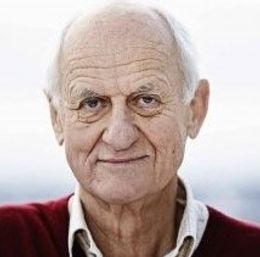
Saniona och Cephagenix om det gemensamma migränprojektet
Förra veckan meddelade det danska bioteknikbolaget Saniona den framgångsrika prekliniska in vivo-valideringen för en migränbehandling i det gemensamma projektet med Cephagenix. BioStock kontaktade professor Jes Olesen, vd för Cephagenix och Palle Christophersen, Executive Vice President, Research, Saniona, för att få veta mer om samarbetet och den senast uppnådda milstolpen.
Köpenhamnsbaserade Saniona har ingått flera forsknings- och utvecklingssamarbeten, bl.a. med Boehringer Ingelheim, Productos Medix, och i maj 2021 blev Saniona också minoritetsägare (27,6 procent) i Cephagenix. Det sistnämnda är ett privatägt bolag baserat i Danmark, inriktat på att utforska jonkanalmodulatorer för behandling av migrän.
Migrän – ett försvagande neurologiskt tillstånd
Cirka en miljard människor världen över lider av den kroniska neurologiska sjukdomen migrän, vilket gör det till den vanligaste neurologiska störningen som särskilt drabbar unga vuxna och kvinnor. Personer som lider av migrän har återkommande svår huvudvärk, som kan pågå i timmar till flera dagar. Huvudvärken är ofta åtföljd av andra symtom som illamående, kräkningar och känslighet för ljus och ljud. Andra sjukdomstillstånd som är förknippade med migrän är stress, depression, stroke och ångest.
Vanliga behandlingar mot migrän är CGRP-antagonister, botulinumtoxin och triptaner. Men eftersom endast en liten andel av patienterna använder nuvarande migränbehandlingar på grund av biverkningar eller bristande effektivitet, finns det ett starkt behov av nya och mer tolerabla behandlingsalternativ.
Sanionas gemensamma migränprojekt med Cephagenix
Samarbetet mellan Cephagenix och Saniona syftar till att identifiera subtypselektiva ATP-känsliga kaliumkanalshämmare (KATP) för behandling av migrän. Cephagenix har producerat nya selektiva hämmare av den specifika KATP-kanalsubtypen som är uttryckta i de intrakraniella artärerna. Första generationens föreningar från denna serie har nu visat effekt i en relevant migränmodell med gnagare.
Läkemedelskandidaterna från Cephagenix-programmet är initialt avsedda för akut migränbehandling med potential för förebyggande behandling hos patienter med kronisk migrän. Cephagenix hämmare utvecklades framgångsrikt med Sanionas teknikplattform Ionbase. De senast utvalda substanserna från serien har visat lovande prekliniska in vitro– och in vivo-resultat, vilket validerar konceptet och de initiala föreningarna från serien.
Cephagenix och Saniona kommenterar samarbetet
För att få veta mer om Sanionas och Cephagenix gemensamma migränprojekt, kontaktade BioStock professor Jes Olesen, Danish Headache Center, Köpenhamns universitet och vd för Cephagenix, samt Palle Christophersen, Executive Vice President, Research på Saniona.
Jes Olesen, Cephagenix and Saniona aim to develop first-in-class KATP channel inhibitors as an efficacious and safe treatment of migraine. What is the medical need within migraine?
– There is a significant medical need for new effective and better tolerated migraine treatment options, and we believe that our subtype selective KATP inhibitors are well positioned to become the next generation effective migraine medicine. Current migraine treatments are only used by a limited fraction of patients partly because of side effects and/or insufficient response rates. We know that in Denmark only one out of seven migraine patients use triptans although these generally show the highest response rates of the medicines used. The new CGRP antibodies and antagonists appear to be better tolerated but their response rates generally seem to be lower.

What are the potential benefits of KATP channel inhibitors?
– We believe the KATP channel is a common pathway for several migraine mechanisms and therefore expect efficacy in a broad segment of patients. Furthermore, we do not expect that this type of medicines will have CNS side effects.
What have your preclinical studies shown that makes you convinced that these findings could lead to new, more effective treatment options?
– We have demonstrated potent effects of our subtype-selective KATP inhibitors on the relevant arteries and shown efficacy in rodent pain models predictive for picking up anti-migraine drugs. Openers of the channel provoke migraine attacks in patients with migraine and blocking the channel is effective in our mouse and rat models of migraine.
– Based on both preclinical and clinical evidence generated by our group during the past two decades we have concluded that activation of KATP channels in intracranial arteries is the most effective means of inducing migraine attacks. This may be explained by the notion that most other migraine provoking principles e.g., CGRP, PACAP and NO seem to be ultimately mediated by opening of the KATP channels in intracranial arteries. Thus, our research shows that the KATP channel is a final common pathway for known triggers of migraine. Therefore, blocking this channel is likely to be highly efficacious in migraine. Moreover, the KATP channel targeted is located in blood vessels outside of the brain and not expressed by neurons. Therefore, no side effects from the brain are expected.
Palle Christophersen, in 2021 Saniona became a minority shareholder of Cephagenix. What made you interested in the migraine programme?
– Saniona has a long-time experience with the pharmacology of different potassium channels. When Jes Olesen approached us with this scientifically very well-validated project for migraine, we saw immediately that we were in an ideal position to quickly establish the necessary technology for driving this project. Furthermore – and very importantly – Jes Olesen convinced us that migraine is still an underserved disease, with a great opportunity to be first movers.

Cephagenix’s novel subtype-selective inhibitors of KATP channels were developed using Saniona’s Ionbase technology platform. Can you elaborate on this procedure?
– IonBase is our compound collection and information database comprising more than 120.000 chemical structures. This knowledge base has been developed via many years of ion channel drug discovery and can be considered as a “library” enriched with chemical structures interacting with ion channels. Therefore, IonBase represents a unique starting point for establishing a new ion channel project.
How far have you come during the first two years of Cephagenix activities?
– During the first year we established the biological technology and screened the entire IonBase and ended up with a number of interesting “compound families.” These were characterised in detail for general off-target effects and basic properties, a process that led to the selection of a few chemical series to proceed further with. During the second year we established the necessary chemical technology and started what we call the hit-to-lead phase. In this phase we synthesised analogues and tested whether potency and selectivity as well as other compound properties could be improved. We also made the first tests on isolated cerebral blood vessels to be sure that the new molecules possessed the ability to counteract dilation of cerebral vessels, which is a prerequisite for an efficient anti-migraine compound with this special mechanism of action.
Jes Olesen, what do you see in the future of your collaboration to bring new migraine treatment options to the patients?
– We already have good contacts to pharma companies in the migraine space and at some point, we see a pharma partnership as the most effective way of developing the program through clinical studies and to the patients. We have seen that introduction of new migraine treatment principles have dramatically increased the migraine market, and there is significant big pharma interest in the field. It is worth noticing that Pfizer recently acquired the CGRP migraine company Biohaven for a total price of more than 11.6 billion USD.
Innehållet i BioStocks nyheter och analyser är oberoende men BioStocks verksamhet är i viss mån finansierad av bolag i branschen. Detta inlägg avser ett bolag som BioStock erhållit finansiering från.

